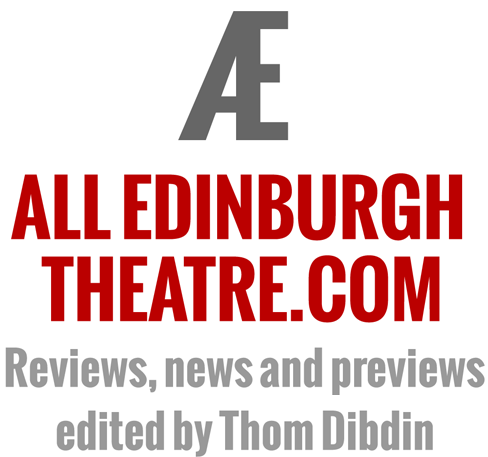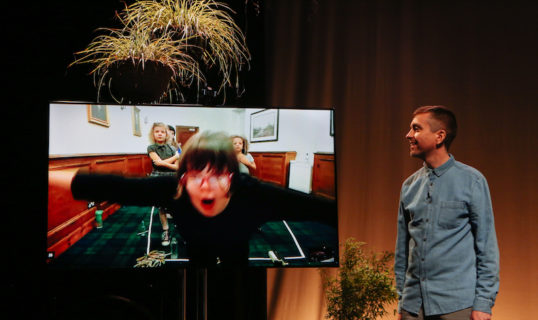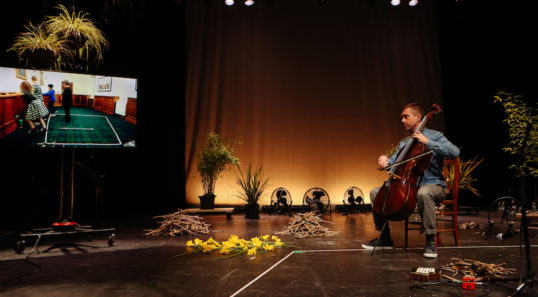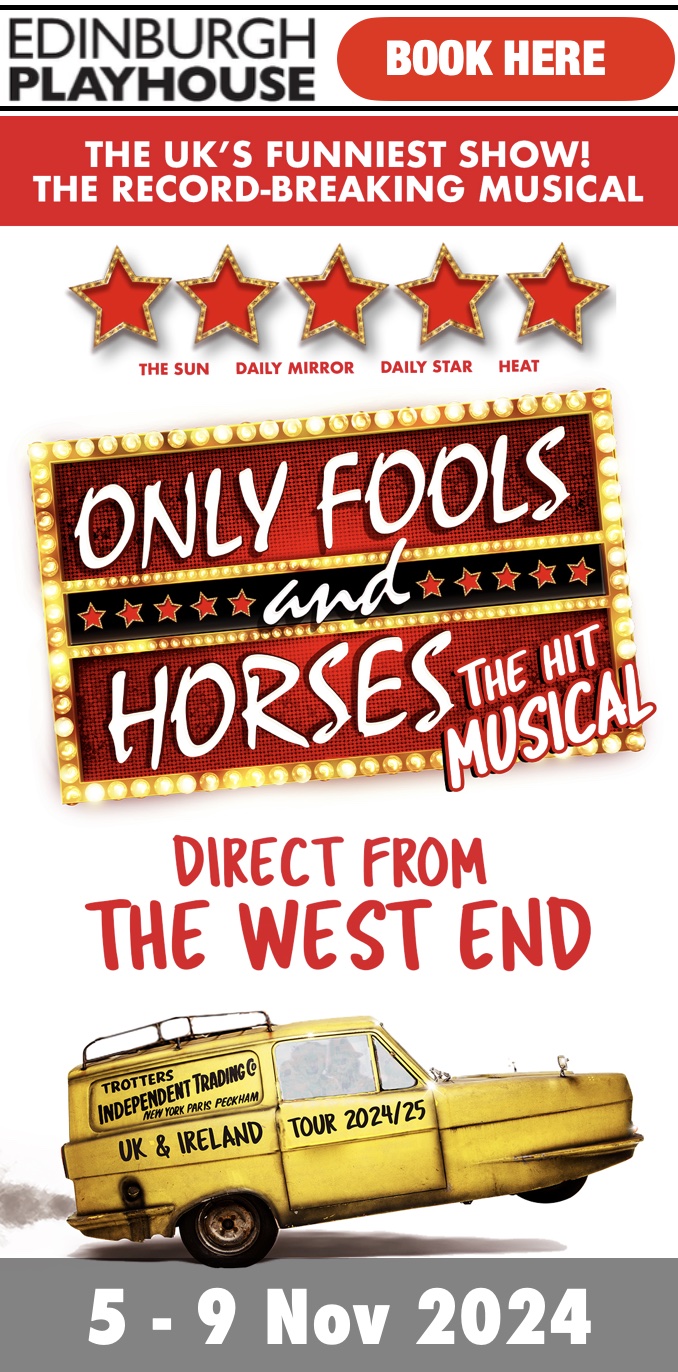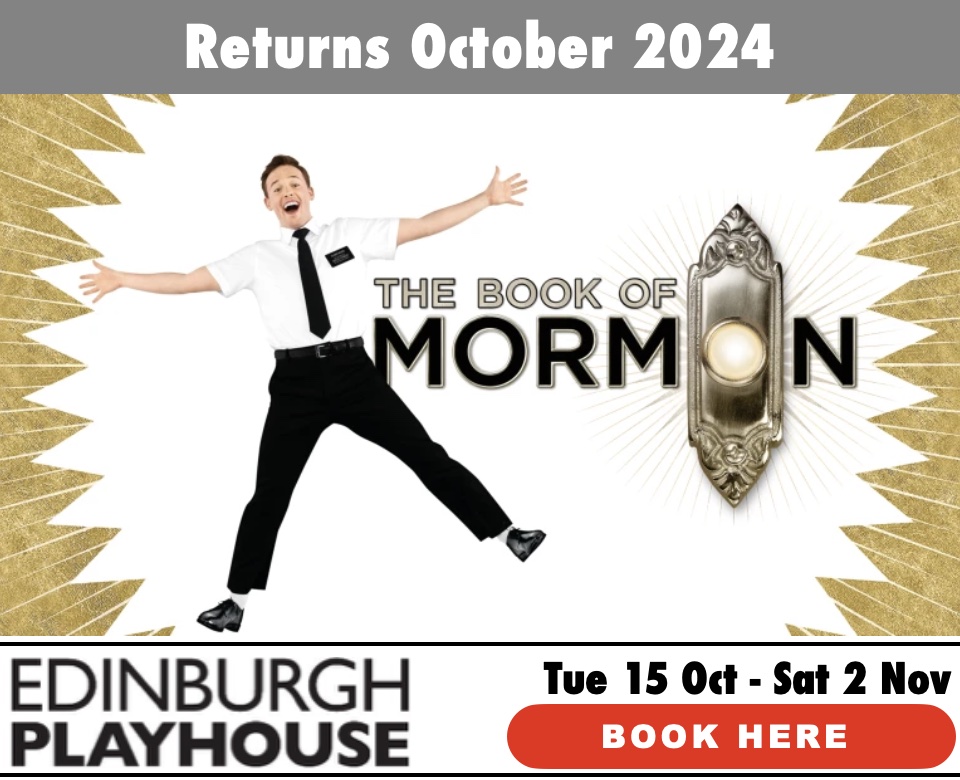As the Crow Flies
★★★★☆ Ground-breaking
Traverse Theatre: Wed 26 Oct 2016
Review by Thom Dibdin
Anarchic, clever and hinting of ritual, Greg Sinclair’s experiment with the theatrical performance of improvised live music with young people, As the Crow Flies, is a strangely calming experience.
Created by Sinclair in the main performance space of the Traverse, working by internet link with two sets of youngsters in Dunoon and Ghent, this second of only two performances of the piece is the culmination of a year of experiments.
The stage is set up with an open-plan foyer kind of vibe – as created for a TV studio. Hanging plants are interspersed among the low-hung and very visible theatre lighting and there are two huge screens placed on either side of the stage. At the rear, looming through the twilight, the fans of wind machines can be made out.
Amidst the technology, and strewn across the stage itself, are random piles of stick, flowers and feathers. Groups of bottles are dotted around, both free standing and incorporated into an arcane hanging device.
Under Jazz Hutsby’s twilight lighting scheme, it could already be a satisfying art installation. And so it turns out to be, in many ways, as Sinclair introduces the two sets of live participants and they proceed to make music with sticks and bottles, perform arcane interpretive dances, and direct Sinclair on his playing of the Cello.
Intriguingly, technology and its limitation are at the heart of it all. The limitations caused by audio feedback and time lag on Jassy Earl’s video design are got round by using pre-written notes, held up to the camera, to facilitate communications between the two remote groups. These notes are also part of the performance.
exquisite
Delay is also used to a phenomenal extent in a section where Sinclair performs on the cello with his own mirrored image, filmed and shown next to him with a two or three second time delay. The construction of this is both exquisite in its calm musical form and displays a very fine attention to detail from Sinclair as a performer.
Indeed, Sinclair’s performance throughout is pitched perfectly. His tone of gentle understanding with his fellow performers shows that while he is certainly the instigator and fulcrum of the piece, you feel that he is working with people who he regards as his equals.
When he introduces a group of youngsters who took part in the various sessions he held over the year of experiment, he holds up another, smaller screen, walking across the stage as the camera pans across the line of children. So that, with the sound of the moorland on which they are standing filling the theatre, if feels as if they are there, in the room.
Musically, this is equally intriguing. Sinclair tapes and loops his performance with the participants, building up soundscapes of falling sticks, blowing across bottles, clanking and cello. Sinclair conducts from the centre, bringing the two sets together: Amelie, Ian, Isla, Lily and Shona in Dunoon; Esra and Ferre in Ghent.
an informal experiment in form
Close your eyes, and at times it is reminiscent of walking through those Alpine regions where they still tag their grazing beasts with bells, the better to find them on a stormy winter night. Or the slapping of ropes against masts of sailing boats in a harbour.
There is no great meaning here, in what is mostly an informal experiment in form. But it is a hugely successful one, demonstrating the principles of remote participation and interaction, together with the idea that children and adults can cooperate on an equal level. Sinclair has clearly demonstrated to his funders and producers – Time to Shine, Imaginate and Platform in Glasgow – the value of his experiment.
Not that he fails to find structure or excitement for his audience. The rule of Chekhov’s Gun is applied to all the elements of the staging – except the hanging plants – leading to a rather brilliant and unexpected climax.
And even better, given the technological nature of the piece, it is still available to view online through the Livescore website.
Running time 1 hour (no interval)
Traverse Theatre, 10 Cambridge Street, EH1 2ED
Wednesday 26 October 2016.
Run ended.
Performance available online: https://www.livescoreproject.com/performance/
NB: This is video of the live-stream, which started before the performance element begins – at about 18 minutes in.
ENDS


